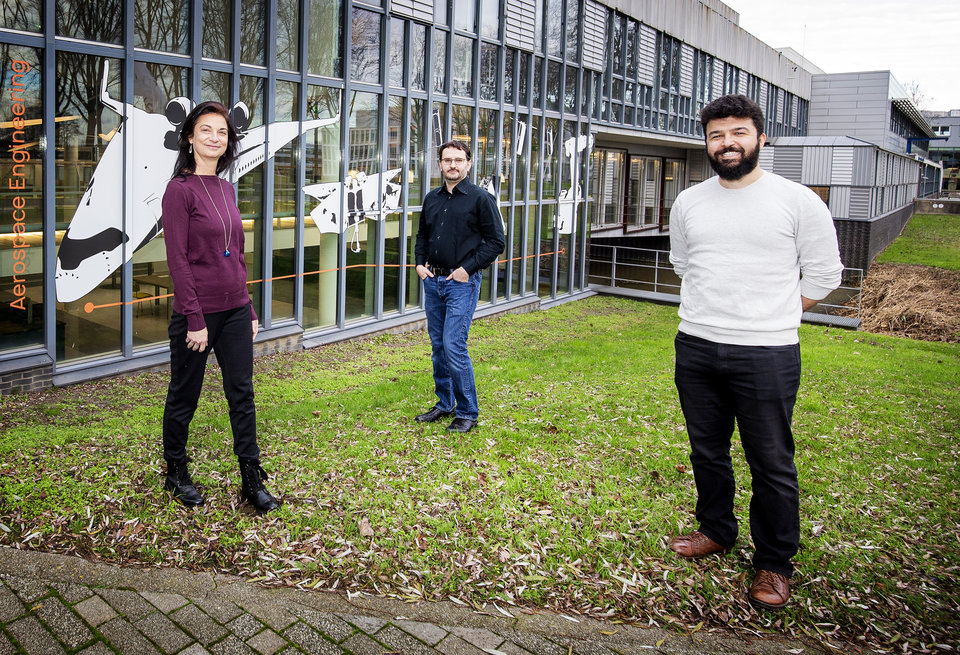SpaceX launches TU Delft mini-satellite: will it survive in space?
During the Transporter-3 satellite launch by SpaceX on 13 January from Cape Canaveral a small satellite from Delft will also travel into space. The DelfiPQ is one of the smallest satellites in the world. Satellite researchers Alessandra Menicucci, Stefano Speretta and Sevket Uludag from TU Delft designed and built the satellite themselves to demonstrate that technology on such a small scale can actually function in space. Swarms of these small satellites are better able than today's large satellites to observe the earth. They could play an important role in monitoring climate change and in fast wireless broadband connections, among other things. On 14 January at 11.21 hrs CET contact was established with the satellite.
Can small systems function in space?
The DelfiPQ satellite to be launched by SpaceX on 13 January measures just 5 by 5 by 18 centimetres, making it one of the smallest satellites in the world. TU Delft is a leader in the field of miniaturisation in space. Satellite researchers Alessandra Menicucci, Stefano Speretta and Sevket Uludag designed and built the satellite to investigate whether such small systems can actually function in space. Researcher Sevket Uludag: "All systems on board that ensure that the satellite can function in space, such as antennas, altimeters and power supply, are smaller than in a normal satellite. We therefore had to make everything ourselves: from circuit boards to micro propulsion systems, from reflectors to communication systems." DelfiPQ still has to answer another important technical question: can such a small satellite be distinguished from a piece of space debris from Earth?
Satellite swarms good for earth observation or wireless broadband
The main advantage of mini-satellites, compared to traditional satellites, is that together in a swarm they can do measurements that large ones are not able to do. Small satellites cost much less, so you can launch dozens or even hundreds of them. They can make observations from multiple locations and collect and process data together. Stefano Speretta, associate professor of Space Systems Engineering: "Such a swarm is ideal for earth observation, for example to map climate change." Satellite swarms may even be able to establish superfast wireless broadband connections in the future.
An exciting launch
DelfiPQ is the third TU Delft satellite to actually go into space. DelfiC3 was the first. This satellite has been in space for over 12.5 years and is still alive. DelfiN3xt was launched in 2013. Contact has recently been re-established with this satellite. University lecturer and project leader Alessandra Menicucci: "Whether the DelfiPQ also comes to life in space is the most exciting of all three. DelfiPQ measures just under half the size of a milk carton. His brothers were slightly larger than a milk carton," Update: good news on 14 January. At 11.21 hrs CET the team picked up the signals from the satellite.
Contact
Alessandra Menicucci, project leader: +31 (0)15 278 7401, a.menicucci@tudelft.nl.
Ineke Boneschansker, press officer: +31 (0)15 278 5361, i.boneschansker@tudelft.nl.
